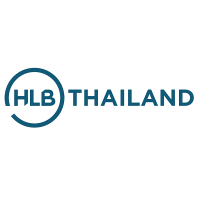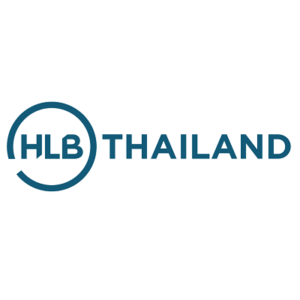By Carlos Camacho, HLB Global Transfer Pricing Leader; Amit Bhalla, HLB Thailand Transfer Pricing Principal; Marina Gentile, Withum (HLB USA) Transfer Pricing Lead

Environmental, Social, and Governance (ESG) factors are pivotal in shaping corporate strategies, influencing as they do both financial and operational decisions. Multinational enterprise (MNE) groups have to integrate ESG considerations into all their transfer pricing practices, which can present both challenges and opportunities.
ESG considerations have gained prominence and new complexities that MNEs must navigate carefully, but what is the real impact of ESG costs on transfer pricing across different regions? What do you need to know about recent regulatory developments and practical considerations as an MNE leader?
How ESG Impacts Transfer Pricing
ESG factors now play a key role in evaluating a company’s impact on society and its environment, which can significantly affect transfer pricing policies for MNEs. In the past, transfer pricing would simply focus on ensuring that intra-group transactions were at arm’s length but with the rise of ESG considerations, things have changed.
ESG-Driven Supply Chain Restructuring
MNEs often restructure their supply chains due to ESG considerations and this can directly impact transfer pricing. As an example, if an MNE centralises its manufacturing functions to reduce its carbon footprint, it can alter related party transactions within the group. This means that relocating production to a region with a lower carbon footprint may require a re-evaluation of any arm’s-length pricing.
This kind of adjustment can go far beyond mere financial implications and reflects a strategic response to ESG pressures. It may require changes to the functions, assets, and risk profiles of manufacturer entities and a recalibration of transfer pricing models in order to align with new realities.
Allocation of ESG-Related Costs
An MNE may also face a challenge in allocating ESG-related costs within group entities. Some of these costs include sustainability reports, ESG branding, and other compliance measures, and they must be distributed on an arms-length basis. So, you need careful consideration to ensure compliance with the benefit test and to avoid classifying these expenses as shareholder activities. Search complexity could increase if the parent entity bears the costs but tries to allocate them across various subsidiaries.
Comparability Analysis and ESG Performance
Incorporating ESG factors into transfer pricing can raise complications around the selection of comparable companies during analysis. After all, companies that may excel in ESG performance may operate in different economic conditions from those that do not. This can make direct comparisons challenging, so to ensure that comparables accurately reflect an arm’s-length scenario, MNEs may have to adjust for these differences.
Some Regulatory Developments Around ESG and Transfer Pricing
Different governments and regulatory bodies often focus on how ESG factors integrate into corporate strategies, including the subject of transfer pricing. Here are some developments that emphasise the growing importance of ESG in shaping corporate behaviour.
Southeast Asia Developments
Within Southeast Asia, regulatory bodies have made significant strides in order to incorporate ESG considerations into corporate and financial reporting. For example, Thailand’s Securities and Exchange Commission (SEC) has established the Thailand ESG Fund, which focuses on investments in assets that show strong sustainability credentials. This is a development that highlights the importance of ESG in investment decisions, as they can indirectly influence transfer pricing strategies. MNEs that operate in Thailand may have to adjust their pricing models to reflect the cost associated with this ESG compliance.
Meanwhile, in Singapore, the Accounting and Corporate Regulatory Authority (with the Singapore Exchange Regulation), intend to mandate climate-related disclosures aligned with the International Sustainability Standards Board (ISSB) before 2025. So, companies that operate in Singapore will have to incorporate ESG considerations into their tax and financial strategies, again influencing their transfer pricing practices.
There are other developments in Southeast Asian countries like the Philippines, Indonesia, and Malaysia. Regulators are taking steps to integrate ESG into corporate government frameworks, to impact transfer pricing practices locally.
Thinking through Transfer Pricing and ESG Concerns
To navigate the intersection of ESG and transfer pricing you need a nuanced understanding of bold regulatory requirements and broader strategic objectives. Integrating ESG factors into transfer pricing is not just about compliance but about aligning business practices with global sustainability goals while all the time effectively managing tax liabilities.
HLB Global experts have highlighted several key considerations for MNEs.
One key aspect involves Base Erosion and Profit Shifting (BEPS) risks. It’s important to ensure that restructuring driven by ESG concerns does not inadvertently trigger these risks. MNEs may need to clearly justify restructuring through ESG objectives, rather than as a tax avoidance strategy to mitigate regulatory risks and strengthen the credibility of any ESG initiative.
In addition, MNEs should consider the potential impact on the group’s brand or trademark value. Because ESG can be a significant factor in a consumer’s decision-making process, a brand can enhance its market value if it associates with sustainability. Consequently, an increase in value may need a re-evaluation of royalty rates for intercompany transactions which involve the brand.
The cost associated with financing can also play a role, as compliance with ESG standards could affect the group’s credit rating. In turn, this could affect the interest rates applied to intercompany loans. Such a situation may require adjustments in transfer pricing models to reflect new cost structures.
Thorough documentation is also critical. As ESG factors can increasingly influence transfer pricing, MNEs have to ensure that documentation, including master files and local files, fully addresses ESG’s impact on related party transactions. Transparent documentation should not only meet regulatory requirements but also ensure that you can defend your MNE’s transfer pricing policies in the face of scrutiny.
How HLB Global Can Guide the Way
ESG will continue to reshape the corporate landscape and MNEs face the double challenge of maintaining compliance while chasing sustainability goals. HLB Global has deep expertise in both transfer pricing and ESG and is ready to guide MNEs through these complexities.
So, whether you’re navigating regulatory requirements in different regions, reassessing your supply chain strategies, or ensuring that your transfer pricing models reflect the true economic value of an ESG initiative, contact HLB Global. By partnering with us you can not only meet your MNE compliance obligations but also position yourself as a leader in sustainability
Contact HLB Global for help in navigating these challenges with confidence and clarity.





